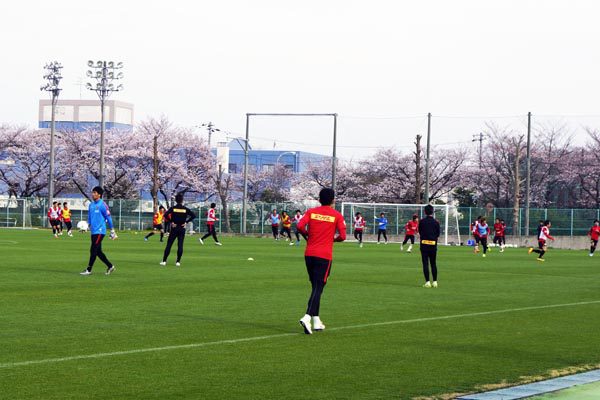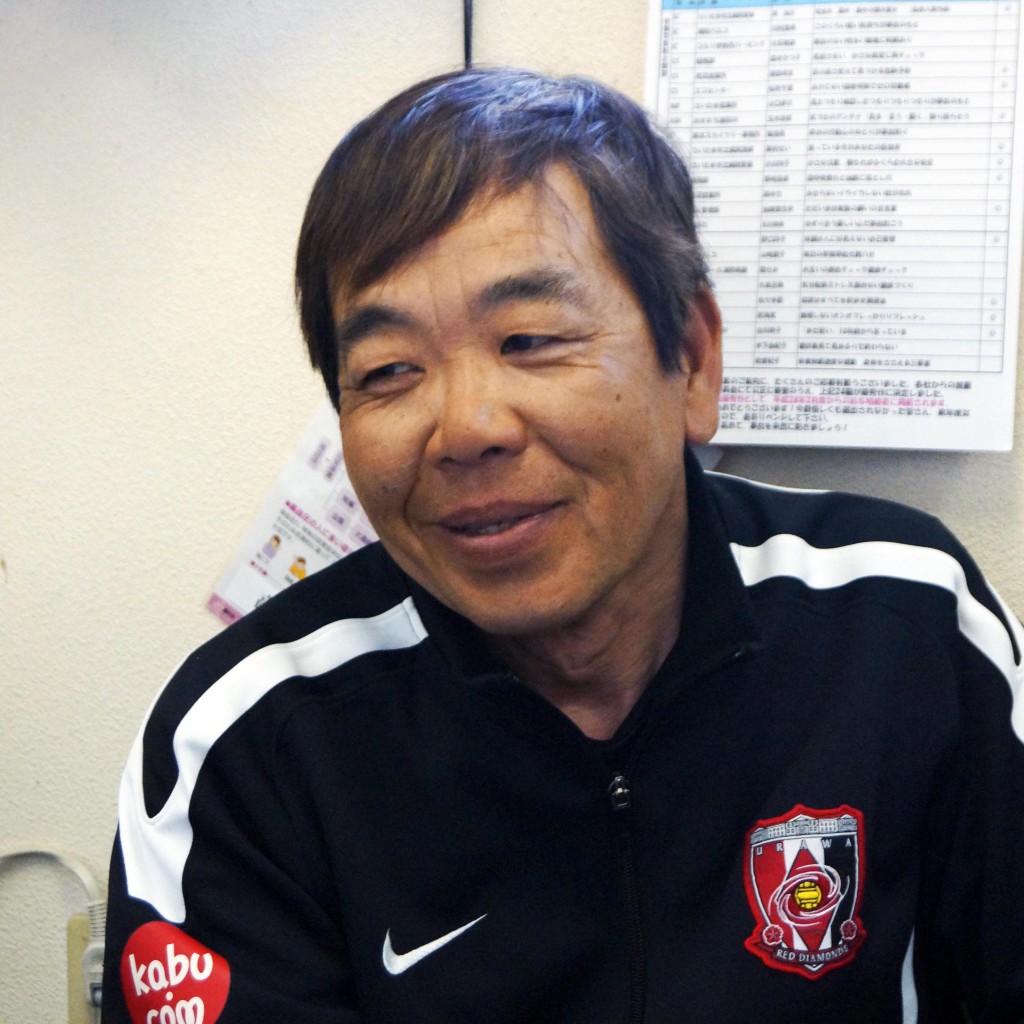Fuji Biogreen, Ltd. products and soil improvement
Creating a sports ground that players can trust
Ohara Training Ground (Saitama City)



Overview
Saitama City’s Ohara soccer field is the training ground for the Japan’s professional soccer league’s (J-League) Urawa Red Diamonds. The two fields cover 17,000 m2 and are used for as many as 300 days out of the year. We talked to turf managers Masuda Toshifumi and Date Seiichi.
Challenges
The ground was reclaimed from marshland, so the drainage was terrible. The state of the grass wasn’t ideal, either, and it wasn’t a great situation for the players. We seized the opportunity of W.O.S.* to do large-scale subterranean drain work using quicklime and sand to try and improve the drainage. But this caused the opposite problem of fertilizer running off too easily. And in addition the soil became very acidic, at pH4.
※W.O.S.=Winter Over Seed
Solution
First, we went to see other clubs’ grounds to widen our perspective and gain objective knowledge. We concluded that fundamental soil improvement was needed, and we requested advice from Numata Takahito of G-stage Inc., who has a very good reputation in the field of sports turf. Thinking ahead to the future, we started remaking the ground using mainly materials from Fuji Biogreen Ltd., which use microbial produced substances (biogenics). Sudden changes in soil environment can activate microbial flora and affect the turf adversely, so we proceeded to improve the soil by gradually adding calcium preparations. At the same time we reviewed our work processes, determining what we needed to do for the team. As a result of proactive communications with the players, we succeeded in building a ground that they can rely on, and this also led to lower maintenance costs and greater efficiency.
Benefits
We were able to improve the soil pH to 5.8 through soil improvement, and by using Fuji Biogreen Ltd.’s materials that systematically use microbial produced substances (biogenics) and natural circulation, which contributes to healthy growth of the turf. It’s improved so much that the players even joke with us: “Don’t make it better than the competition site, OK?!” As a training facility, it also boasts the proud record of 0 injuries caused by the pitch for two years running.
Interview

My journey toward becoming a groundkeeper began when in 1997 I saw the World Cup qualifying match against France at the National Stadium. I always tell myself that my mission as a groundkeeper is to provide the very best training ground in the J-League.

I have a very clear memory of a forward who came from South America demanding that we totally re-lay the turf in front of the goal! When the J-League first started, we didn’t have a model to follow, and had no idea what the ideal ground should be like. Things have really changed; now the players jokingly ask us not to make it so good that it’s better than the competition site.